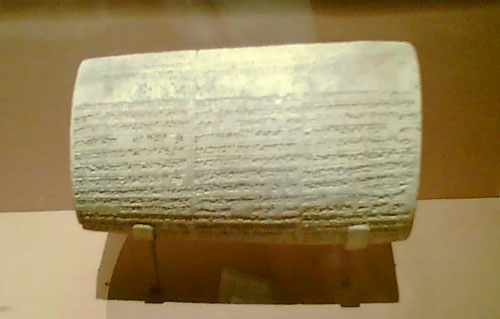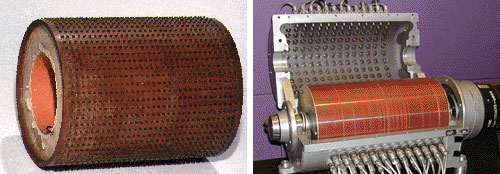A gem I saw in a museum recently: this is a large cuneiform-inscribed cylinder, maybe 3-4 inches thick, which describes the building activities of king Nebuchadnezzar (better known in the bible for his opposite exploit when he destroyed Jerusalem in 587 BC).

Anyway, in one of those moments of associative memory, it struck me how similar this looked to the contact-studded drum memory devices of the ABC, or Atanasoff-Berry Computer, one of the earliest electronic computers (1941), pictured below at the left. One is also reminded of the magnetic drums that served computers for memory in the 1950s, like the one to its right.

The idea of using a drum for computer storage makes good sense in terms of allowing it to be scanned easily by rotating it; but the Babylonians probably used this form because it allows you to cram much text (and many construction exploits, if you’re a busy king like Nebuchadnezzar, he of the hanging gardens of Babylon) into a relatively compact object.
Also worth noting: The king’s memory cylinder is still readable after more than 26 centuries; so, can you read your 5-1/4 inch floppies any longer?






0 Responses to “Babylonian memory technology”